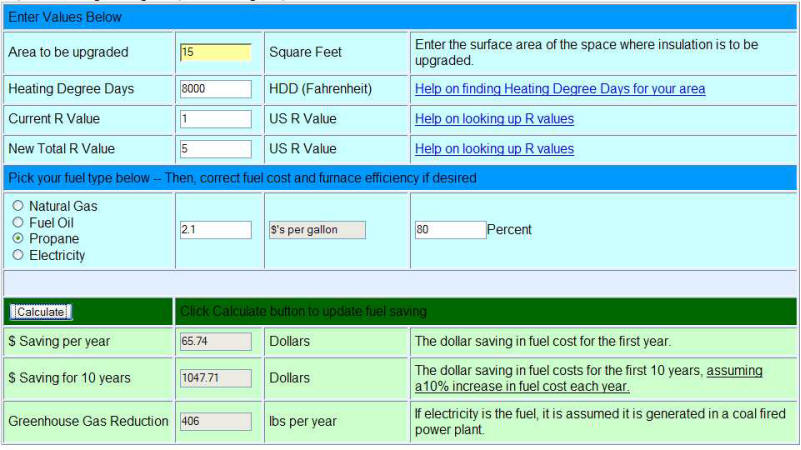
Search
The Renewable Energy site for Do-It-Yourselfers
The Cardboard
Shutter
|

Based on how popular the simple
Bubble Wrap insulation for windows is, I thought I would add this cardboard
shutter as suggested in the book "Movable Insulation" by
Langdon (a great book).
The idea is cut out several pieces of
cardboard to fit the window, and stack them together. The edges can be
taped with duct tape to hold the whole stack together. Some spots of glue
here and there between the layers might also help. The book suggests
applying a layer of thick aluminum foil to both faces of the cardboard panel --
the improves the thermal performance substantially, and also makes the shutter
more fire resistant.
|
|
Ideally you should mount the
cardboard shutter such that any gaps around the edges are small, and spaced a
little ways from the window to leave an air gap.
I've picked up large pieces of
cardboard from our local kitchen appliance store -- they were quite happy to
part with them.
In my climate (cold), the saving for
this scheme on a 3 ft by 5 ft window would be:
Single Glazed:
Using the
Insulation
Upgrade Calculator,
Current R value =
1 (single glazed window)
New R value = 1 +
(1 air films + 1 cardboard + 2 foil) = R5
Propane fuel at
$2.2 per gallon with an 80% efficient furnace
The R4 for the cardboard shutter is
roughly based on: The air films on either side of the cardboard add R1
(like any inside storm window) + the cardboard itself -- say half an inch at
R2(?) per inch adds R1 + the R value associated with alum foil on the inside and
outside adds R2.
The aluminum foil on the inside
reflects IR heat from the room back into the room, and the aluminum foil coating
on the outside acts as a low emissivity surface to reduce heat radiation to the
outside.
Insulation
Upgrade Calculator for Cardboard Shutter:

$66 in one year!! And,
400 lbs of green house gas saving !!
The saving for a double glazed window
is $27 with a 170 lb CO2 saving.
This should be about one week payback
on the cost of the duct tape and aluminum foil!
So, even if you plan to do something
fancier for "next winter", you can do this right now, save some money and
greenhouse gas, and then recycle the cardboard when you go to fancier window
treatments.
If you give this a try, please email
me a picture --
Gary.
Note: I got one comment from Dave
in the UK to the effect that if even a small gap is left between the window
and the insulating shutter, that he got a lot of condensation.
This probably has a lot to do with climate and whether the existing window
is double pane or not. High indoor humidity and single glazing will
aggravate the condensation problem.
In our dry climate and with
double glazed windows, we rarely if ever experience condensation on the
windows.
At any rate, if you do get a lot
of condensation, then you should do something about it, as the condensation
can cause damage over time.
Further Note: Dave came
through with a
calculator to tell how likely you are to have a condensation
problem with a loose fitting shutter. It depends on outside
temperature, inside humidity, and the R values of the window and shutter.
Very helpful for determining if you are likely to have a condensation
problem or not -- Thank You Dave!
The "Movable
Insulation" book by William Langdon is a real classic -- it has hundreds of
ideas for using movable insulation in ways that dramatically improve thermal
performance -- highly recommended.
It was published in 1980 by Rodale.
Used copies can be found on Bookfinder.com for about $5, it has also recently
gone back into print via an
internet publisher.
Gary 2/7/07
Updated July 20, 2009


